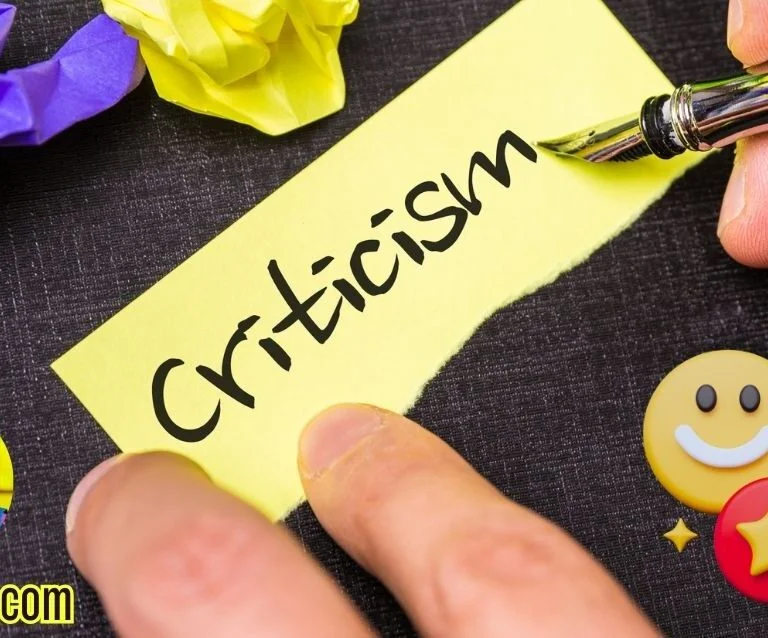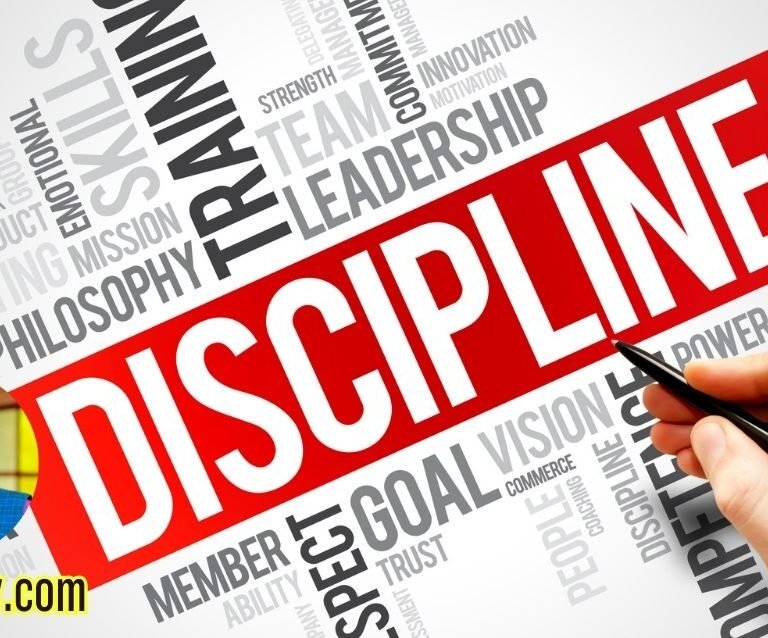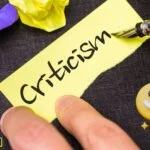Weakness is often viewed through a negative lens, seen as something to be avoided or concealed
Weakness is often viewed through a negative lens, seen as something to be avoided or concealed. Within a society that values strength, resilience, and perfection, those who exhibit vulnerability may find themselves marginalized or judged. This perspective fails to recognize that weakness is a universal human experience. Every individual possesses their own set of limitations, faults, and challenges. Rather than focusing solely on these imperfections, it is crucial to redefine weakness and embrace it as an integral component of personal growth.
By acknowledging one’s weaknesses, a person opens the door to self-awareness and growth. This new framework encourages individuals to see their perceived flaws not as deficits, but as opportunities for improvement. Embracing imperfections allows a person to explore their potential and work toward self-betterment. In this sense, weakness serves as a catalyst for personal development, urging individuals to confront their fears and seek strategies for overcoming them. The act of recognizing weaknesses can foster resilience, as it leads to a deeper understanding of oneself and the challenges one faces.
Moreover, this shift in perspective can positively influence interpersonal relationships. When individuals accept their vulnerabilities, they become more empathetic toward others, enhancing communication and connection. Understanding that everyone experiences weakness can cultivate a sense of community and support, ultimately promoting collective growth. By fostering an environment where weaknesses are acknowledged and discussed, individuals can share strategies and learn from one another’s experiences. Thus, weakness emerges not as a mark of inferiority, but as an essential aspect of the human experience that, when embraced, paves the way for significant transformation and empowerment.
The Connection Between Weakness and Strength
Weakness and strength are often perceived as opposing forces, yet together they create a dynamic interplay essential for personal development. Recognizing our weaknesses is a crucial first step in the process of self-improvement, as it allows us to identify specific areas that require attention and growth. Rather than viewing these imperfections solely as drawbacks, we can consider them as opportunities for assessment and enhancement. This perspective facilitates the cultivation of resilience, as individuals learn to navigate their vulnerabilities and transform them into sources of empowerment.
Historical figures and contemporary leaders exemplify this transformative journey from weakness to strength. For instance, Michael Jordan, widely regarded as one of the greatest basketball players, faced rejection from his high school basketball team. This initial setback propelled him to train rigorously, ultimately enabling him to harness his determination and skill, which contributed significantly to his legendary career. Similarly, Oprah Winfrey, who faced numerous hardships throughout her youth, managed to turn her challenging experiences into a platform that promotes empathy and inspiration for millions worldwide. These examples illustrate how embracing one’s vulnerabilities can lead to remarkable achievements.
Furthermore, understanding our weaknesses enables us to develop essential skills, such as adaptability and perseverance. In many cases, the act of confronting and analyzing our deficiencies provides insights that shape our character and guide our behavior. By addressing our weaknesses, we cultivate a sense of humility and acknowledge that growth is a lifelong journey, wherein mistakes serve vital lessons.
Ultimately, the connection between weakness and strength is vital for holistic personal growth. By embracing our imperfections, we not only become more resilient but also inspire others to acknowledge their own vulnerabilities, creating a ripple effect that encourages a collective pursuit of self-improvement. This journey of self-discovery assures us that strength is not merely defined by triumphs but is, in essence, a product of overcoming our weaknesses.
Self-Awareness: The First Step Toward Growth
Self-awareness is a foundational element in the journey of personal development and growth. It involves the conscious recognition of one’s thoughts, feelings, and behaviors, allowing individuals to understand their strengths and weaknesses more clearly. By developing self-awareness, individuals can begin to identify how their imperfections influence their lives and relationships. This recognition is the first step toward meaningful change.
One effective technique to enhance self-awareness is journaling. Writing regularly encourages reflection, allowing individuals to explore their thoughts, feelings, and behaviors in depth. Keeping a journal can reveal patterns that may not be immediately obvious, shining a light on emotional triggers or repeated responses to situations. Through journaling, individuals can analyze their weaknesses and gain insights into their impact on personal growth.
Mindfulness practices also play a vital role in fostering self-awareness. Engaging in meditation or mindful breathing exercises encourages individuals to focus on the present moment, reducing distractions from external influences. Such practices cultivate an inner awareness, allowing individuals to observe their emotions without judgment. This form of awareness helps in recognizing habitual reactions and provides opportunities for change and development.
Seeking feedback from trusted individuals can further bolster self-awareness. Friends, family, and colleagues can offer perspectives that individuals may not see. Constructive feedback can illuminate hidden weaknesses and provide valuable insights into how one is perceived by others. It is essential, however, to approach this feedback with an open mind, as it serves as a mirror to one’s behavior and can catalyze personal growth.
In all, embracing self-awareness is crucial for recognizing weaknesses and understanding how they influence personal interactions and overall development. By employing techniques such as journaling, practicing mindfulness, and soliciting feedback, individuals can embark on a journey toward profound self-discovery and growth.
Embracing Imperfections: A Path to Resilience
Embracing imperfections is a critical element in the journey toward personal resilience. Acknowledging that everyone has flaws enables individuals to cultivate a growth mindset, which is essential for overcoming obstacles. When one embraces their weaknesses, they can approach challenges with a healthier perspective, transforming perceived shortcomings into opportunities for growth. This acceptance allows for a more profound understanding of oneself, which in turn fosters a more adaptable and resilient character.
To effectively shift one’s perspective regarding imperfections, it is essential to engage in self-reflection. Taking time to explore personal flaws entails recognizing these aspects not as failures, but rather as integral components of one’s identity. By reframing the narrative surrounding imperfections, individuals can better understand their experiences and feelings, ultimately leading to the development of stronger coping strategies. For example, journaling about daily challenges and the feelings that arise can help transform a previously negative perception into a constructive learning experience.
Furthermore, creating a supportive environment plays a vital role in embracing imperfections. Surrounding oneself with people who affirm and appreciate one’s authenticity can encourage an open discussion about weaknesses. Such conversations can reinforce the idea that imperfection is a universal human experience, diminishing the stigma attached to flaws. In addition, engaging in mindfulness practices can enhance self-acceptance, allowing individuals to observe their thoughts and feelings towards their weaknesses without judgment.
In doing so, individuals can gradually develop greater resilience. Accepting imperfections leads to increased emotional intelligence, enabling better responses to stressors and setbacks. As individuals begin to see imperfections as pivotal elements of the human experience, they strengthen their capacity for growth, allowing them to navigate challenges more effectively and emerge stronger.
Transforming Weaknesses into Unique Strengths
Transforming weaknesses into unique strengths is a vital part of personal development that requires introspection, deliberate action, and a growth mindset. The journey begins with the identification of one’s weaknesses—a task that can be daunting yet rewarding. Once recognized, the next step involves embracing these imperfections rather than shying away from them. By acknowledging areas for improvement, individuals can pave the way to transformative change.
Setting SMART goals—Specific, Measurable, Achievable, Relevant, and Time-bound—provides a structured approach to personal development. For instance, if an individual identifies public speaking as a weakness, a SMART goal might be to join a local Toastmasters club to enhance communication skills over a six-month period. This targeted strategy not only promotes accountability but also encourages progress tracking, which reinforces motivation.
Additionally, seeking mentorship can be immensely beneficial. A mentor can offer guidance, share valuable experiences, and provide constructive feedback that is often difficult to obtain independently. Engaging with someone who has navigated similar challenges can illuminate pathways for growth and help avoid common pitfalls. This support system can cultivate a learning environment where weaknesses morph into specialized knowledge or skills.
Continuous learning is equally important. Individuals are encouraged to seek educational resources, such as workshops, online courses, or self-help books, that align with their development needs. This pursuit of knowledge equips them with new tools and perspectives, allowing them to reframe weaknesses as opportunities for growth. Such a dynamic approach to personal development encourages resilience, adaptability, and ultimately, the transformation of weaknesses into distinct strengths.
Stories of Personal Mastery
Numerous individuals have turned their perceived weaknesses into remarkable strengths, offering inspiring narratives of personal mastery. One such example is the story of J.K. Rowling, whose struggles with depression and financial instability became the backdrop for one of the most beloved literary franchises in history. Facing adversity and self-doubt, Rowling utilized her experiences to craft the world of Harry Potter, ultimately illustrating how embracing imperfections can lead to extraordinary achievements. Her journey not only highlights the importance of resilience but also serves as an invitation for others to acknowledge their vulnerabilities.
Another powerful narrative is that of Oprah Winfrey, who rose from a challenging upbringing marked by poverty and trauma to become an influential media mogul. Winfrey’s story embodies the essence of personal growth through accepting and overcoming flaws. By sharing her life experiences and initiating conversations about her own vulnerabilities, she has inspired countless individuals to embrace their difficulties. Winfrey’s transformation from adversity into success stresses the strength that can emerge when one chooses to confront their weaknesses rather than hide from them.
These stories exemplify the transformative power of recognizing our flaws and using them as springboards for personal development. Furthermore, they encourage readers to find their own paths to mastery by reflecting on their journeys. Each narrative emphasizes that one’s weaknesses do not define their potential; rather, they can serve as the foundation for growth and self-improvement. By analyzing such examples, we can see that embracing our imperfections and accepting our past experiences is crucial to discovering inner strength and motivation in the quest for personal mastery.
The Role of Community and Support
In the journey of self-discovery and personal growth, the role of community and supportive relationships cannot be overstated. A strong support system provides individuals with a sense of belonging, fostering an environment where they can embrace their vulnerabilities and work towards overcoming them. This collaborative space allows for the sharing of experiences, insights, and strategies, which are essential for navigating through life’s difficulties.
One of the critical aspects of community support is the encouragement it offers to individuals struggling with self-acceptance. Engaging with others who share similar challenges can significantly change one’s perspective on their weaknesses. For instance, support groups or online forums dedicated to personal growth enable members to discuss their experiences openly, fostering connections that help reduce feelings of isolation. This sense of solidarity empowers individuals to confront their imperfections and recognize that they are not alone in their journeys.
Finding a supportive community requires intentional effort. Begin by identifying groups that resonate with your interests or struggles. Local community centers, social media platforms, or even hobby clubs can serve as great starting points. Actively participating in local events or workshops can also help individuals forge meaningful relationships. Mutual support within a community often cultivates accountability, where members encourage one another to set and achieve personal development goals.
Moreover, cultivating relationships with friends, family, or mentors who promote positivity and constructive feedback plays a vital role in personal growth. Whether through informal gatherings or structured meetings, these interactions can significantly enhance an individual’s resilience. In conclusion, recognizing the importance of community and support not only enriches one’s life but also serves as a powerful catalyst for transforming weaknesses into strengths. By embracing the strength found in community, individuals can embark on a profound journey of self-improvement.
Practical Exercises to Identify Weaknesses and Strengths
Recognizing one’s weaknesses and strengths plays a pivotal role in personal development. To aid in this journey, several practical exercises can facilitate greater self-awareness and understanding. These exercises include self-assessment tools, reflective questions, and engaging activities designed to prompt introspection.
One effective self-assessment tool is the SWOT analysis, which stands for Strengths, Weaknesses, Opportunities, and Threats. By dedicating time to reflect on each quadrant, individuals can gain clarity on areas where they excel and aspects that may require improvement. Writing down thoughts in each category can make the process more tangible and relevant.
Additionally, posing reflective questions can deepen self-discovery. Examples of such questions include: What accomplishments am I proud of? What activities do I find challenging? What feedback have I received from others regarding my performance? Answering these questions not only prompts self-reflection but helps paint a comprehensive picture of personal capabilities and areas for growth.
Engaging in activities like journaling or mindfulness meditation can further enhance introspection. Journaling allows individuals to document their daily experiences, obstacles, and wins, fostering a greater understanding of patterns in behavior and thought. Meanwhile, mindfulness meditation can help in identifying emotional responses and behavioral tendencies, facilitating clarity regarding personal strengths and weaknesses.
Lastly, seeking feedback from trusted peers or mentors can provide valuable insights that may not be immediately evident. These external perspectives can highlight both strengths and weaknesses, contributing to a broader understanding of oneself. By proactively engaging in these exercises, individuals can empower themselves to embrace their imperfections and harness their full potential for personal growth.
Taking Action: The Next Steps
Embracing imperfections is an essential part of personal growth, and the shift in mindset can serve as a catalyst for meaningful change. To translate this source of inspiration into tangible improvements in your life, it is crucial to take actionable steps. Setting realistic goals is the first step in this journey. Goals should be specific, measurable, achievable, relevant, and time-bound (SMART). This framework encourages individuals to create milestones that can guide them through their path of self-improvement while remaining grounded in reality.
Once goals are established, developing an action plan becomes pivotal. This plan should break down the overarching goals into manageable tasks, which can be tackled on a daily, weekly, or monthly basis. Consider integrating both short-term and long-term objectives to ensure a balance between immediate results and sustained progress. For instance, if one aims to improve communication skills as a personal growth goal, short-term tasks may include practicing active listening during conversations, while a long-term objective may encompass joining a public speaking group.
Moreover, introducing accountability measures will significantly enhance the commitment to these goals. This could mean partnering with a friend or a mentor who can provide support and feedback throughout the process. Regular check-ins will not only motivate individuals to stay on track but also foster an environment for open discussions about progress and setbacks. Utilizing digital tools or journals can also aid in monitoring progress, helping to celebrate small victories and recognize areas for improvement.
By taking these actionable steps, each individual can assertively move toward embracing their weaknesses as unique opportunities for personal growth. Ultimately, this proactive approach can lead to a more fulfilling journey of self-discovery and empowerment.









